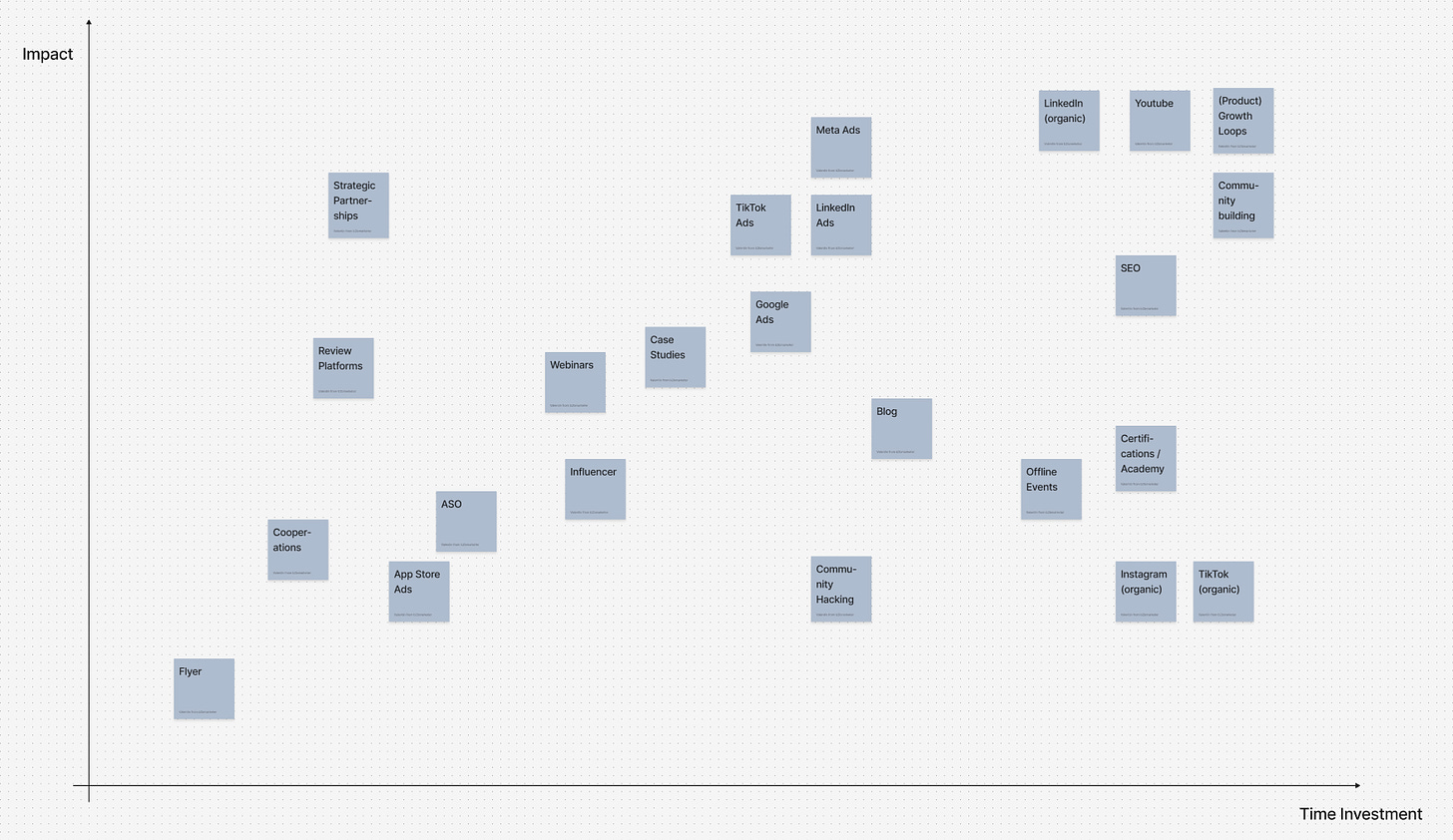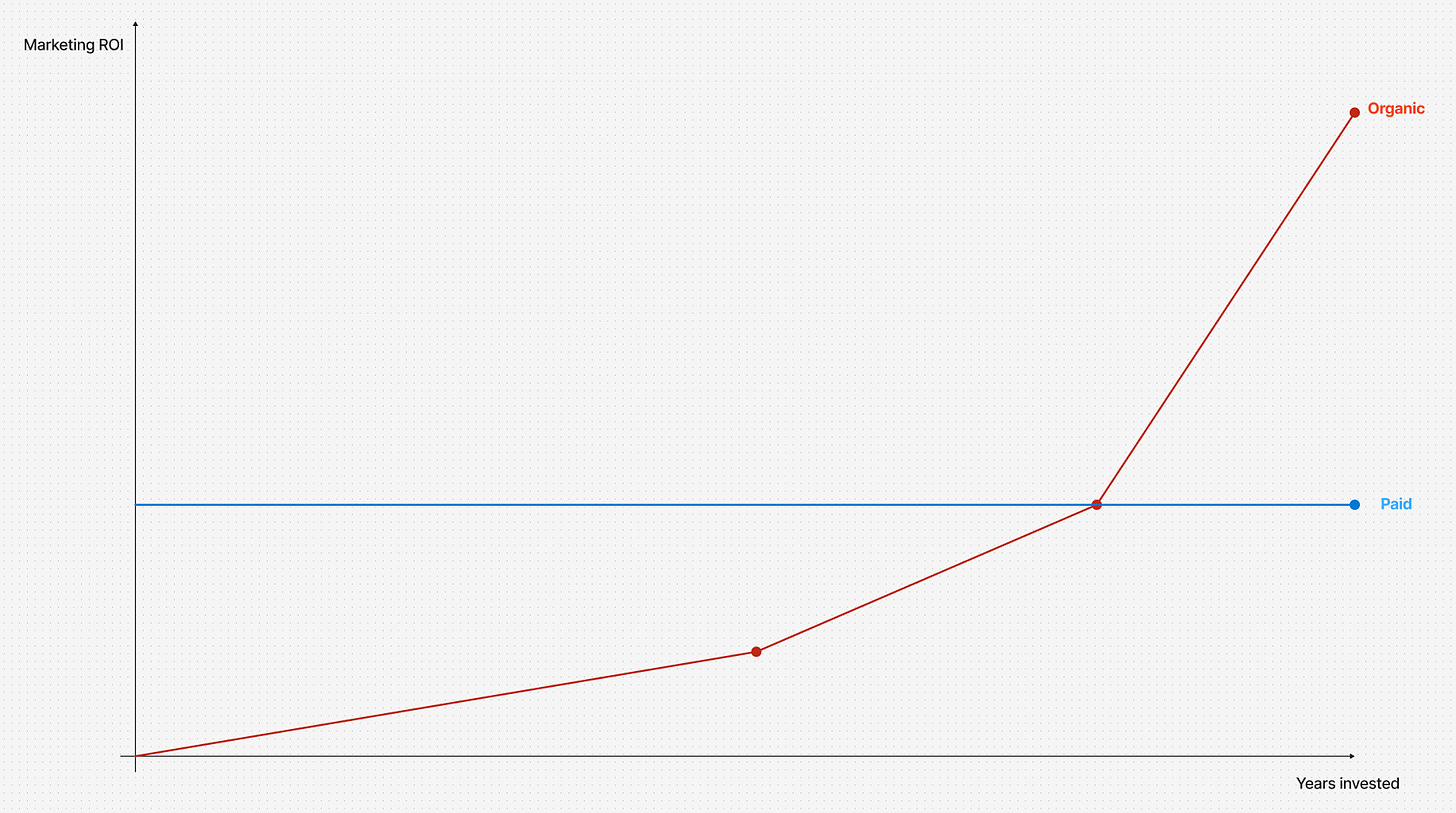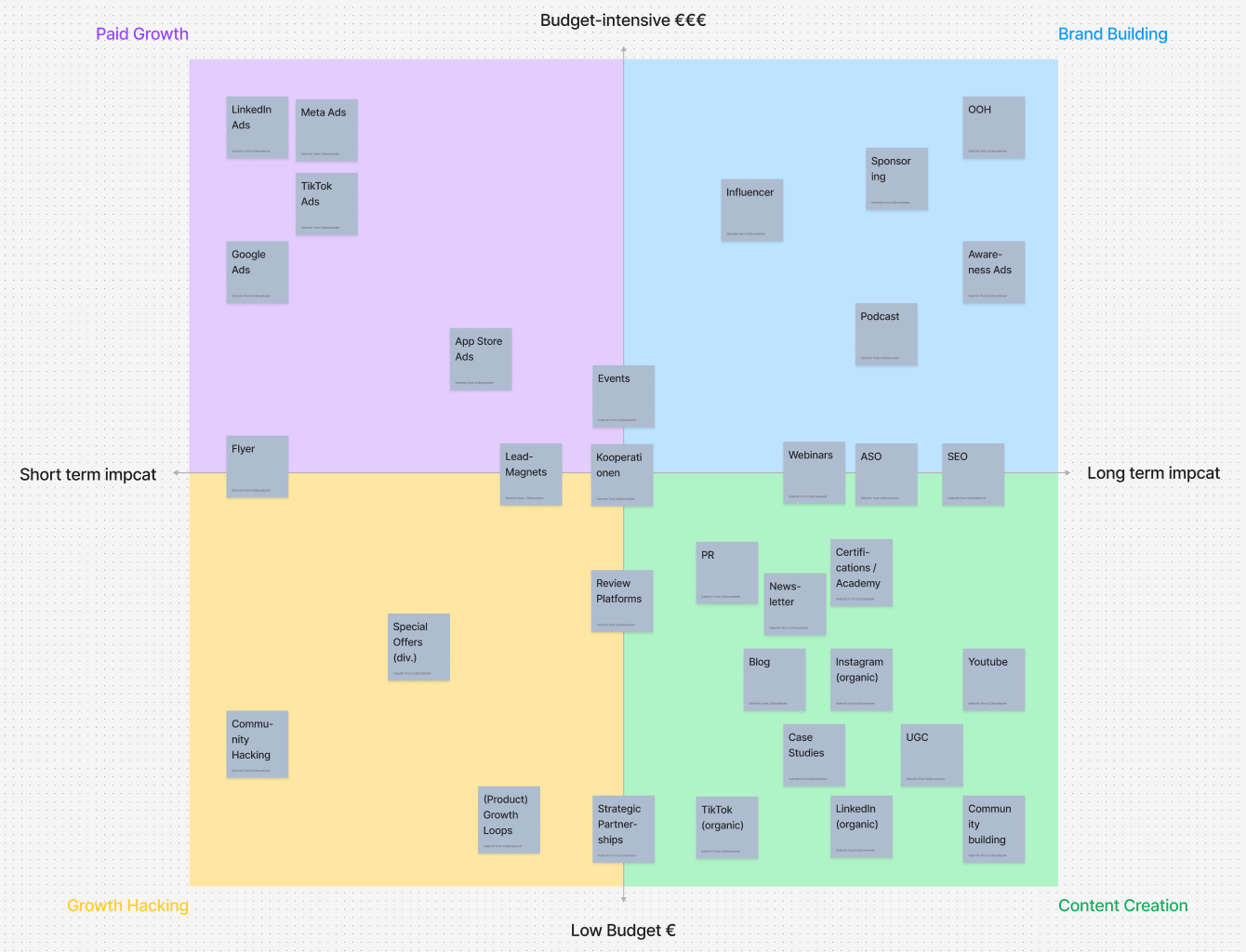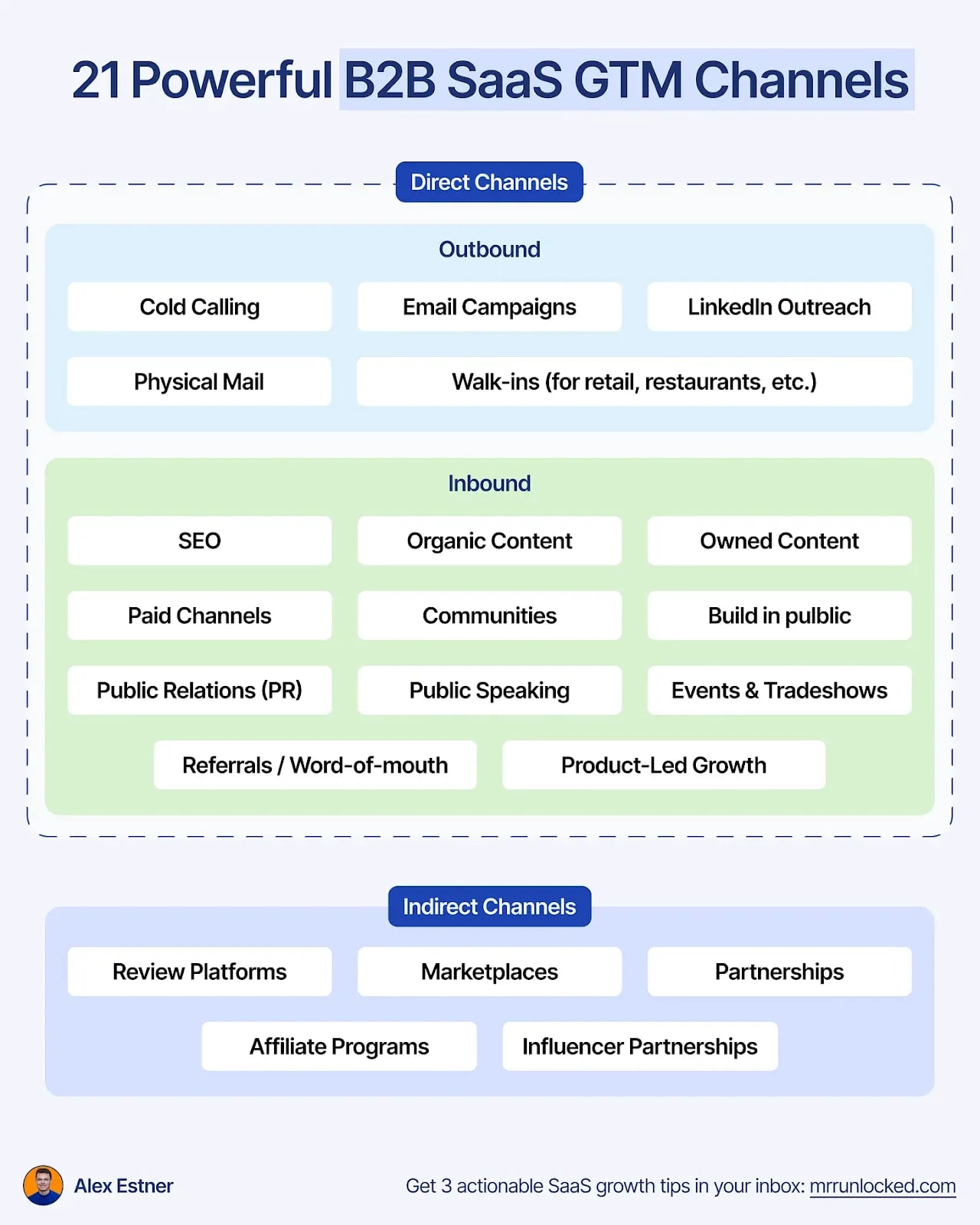Understanding & Prioritizing B2B Marketing Channels
3 Useful Angles to Evaluate and Prioritize Channels When Building Your Marketing & GTM Motion
In the early stages of building a startup, choosing the right marketing channels can feel overwhelming. Founders face limited time, tight budgets, and constant pressure to grow fast.
In order to build a successful Go-To-Market motion, it’s important to choose the right marketing (and sales) channels.
In this episode of b2b_growth.exe I’ll give you some tipps, angles and frameworks to:
Evaluate marketing channels through different strategic lenses
Understand how and when to use each lens
Build smarter, stage-appropriate marketing playbooks
Let’s jump in :)
Not all marketing channels work the same way.
Some bring nearly instant leads. Others take months to compound.
Some are scalable but expensive. Others are cheap but high-effort.
The trick is understanding each channel’s characteristics, and how to mix them based on your goals, stage and resources.
The 3 Useful Angles to Evaluate and Prioritize B2B Marketing Channels
1. Time Invest vs. Impact
This lens answers: How much time do I need to invest before seeing results? And how big will those results be?
Quick examples:
High Impact, High Time: SEO, Community Building, Organic YouTube
Mid Time, High Impact: Meta Ads, Google Ads
High Time, Low Impact: Organic Instagram, Organic TikTok
Low Time, Low Impact: Flyer, on-off Cooperations
When to use this lens:
When mapping out your marketing roadmap or quarterly plan
When deciding where to invest your limited bandwidth as a small team
2. (Ramp-Up) Time vs. ROI
This lens answers: What’s the ROI of that effort over time? And what’s the ramp-up?
Paid channels (e.g., Google or LinkedIn Ads) can deliver fast results but rarely improves in ROI over time. Sometimes the ROI even decreases over time, especially when hitting the point of diminishing returns.
Organic channels (e.g., SEO, blog, product loops, community) start slow but compound, becoming more efficient with time and every iteration.
Why this matters:
Paid works well for early traction or testing messaging
Organic works well for building leverage and scalability
When to use this lens:
When marketing budget is available
When planning channel mix by growth phase
When deciding where to build in-house vs. outsource
3. Budget vs. Impact Horizon
This matrix maps marketing channels based on how budget-intensive they are and whether their results are short- or long-term.
Quadrants:
Paid Growth (High Budget, Short-Term Impact): e.g. Meta, LinkedIn, Google Ads
Brand Building (High Budget, Long-Term Impact): e.g. Sponsorings, OOH, Podcasting
Content Creation (Low Budget, Long-Term Impact): Blog, LinkedIn Organic, YouTube
Growth Hacking (Low Budget, Short-Term Impact): Community hacks, product (growth) loops, Special Offers
When to use this lens:
When creating or refining your Marketing Playbook
When adjusting spend vs. time tradeoffs
Why This Matters: Strategic Planning for Early-Stage Startups
In early-stage startups, your biggest constraints are time, money, and strategic clarity. That’s why understanding the nature of each channel is critical:
It prevents waste. Misusing a high-effort channel at the wrong time burns your runway.
It enables clarity. You know what to expect and how long things take to work.
It drives better decisions. You can test fast, double down on what works, and plan for scale.
When to Use Each Angle in Practice
Building a Marketing Playbook
Use the Budget vs. Impact Horizon matrix to map initial channel bets
Layer on (Ramp-Up) Time vs. ROI to balance long-term and short-term bets
Use Time Invest vs. Impact for weekly/monthly priorities & project planning
Evaluating New Ideas
Ask: Is this a short-term initiative or a long-term project?
What’s the real time/effort tradeoff?
Is this scalable if it works?
Scaling Your Motion
Don’t just chase more channels. Instead, ask:
Can I make this channel more efficient over time?
Can I connect this with other efforts (e.g. SEO + YouTube + newsletter)?
Building your GTM Motion
In order to reach your revenue goal, Sales and Marketing must work together.
When it comes to building your GTM strategy and motion it’s crucial that you’re able to prioritize marketing channels, based on the different angles, to match them with your sales activities.
To quote Alex Estner, who is a GTM Advisor for early-stage startups:
But keep in mind that:
1️⃣ You can NOT run more than 3 (better 1-2) in parallel as an early-stage startup
2️⃣ Not all channels are equally relevant for you (depends on your ICP, ACV, own skills)
Final Thoughts: Less is more
Founders often ask: "What are the best channels?"
The right question is: "Which channel matches my current goals, stage, and constraints?"
Understanding the trade-offs and strengths of each marketing channel is what separates chaotic execution from a focused, compounding marketing system.
Pick 1-2 marketing channels wisely, snyc them with your sales efforts and keep evaluating as you grow.
I’ve you need a second opinion, or feedback on your current marketing playbook, pls reach out at any time and book a free call with me.
Leave your feedback in the comments, if this article was of any help. 🫶
Cheers
Valentin
Want to learn more about B2B Growth?
Subscribe to the newsletter and follow me on LinkedIn.






